Planning the perfect 2 day Hanoi itinerary and wondering where to start? Hanoi is a city that captures your senses the moment you arrive. It’s a fascinating blend of old and new—where ancient temples and colonial architecture stand alongside buzzing street markets and modern cafés. The capital of Vietnam is a city of contrasts, filled with history, energy, and charm that make it impossible to ignore. Whether you’re wandering through the winding streets of the Old Quarter, sipping egg coffee at a hidden café, or watching a train thunder past just inches from your seat, Hanoi offers a travel experience unlike any other.
Just so you know, this post contains affiliate links. If you book a tour, hotel, or buy something through one of these links, I may earn a small commission—at no extra cost to you. It helps me keep this blog running and full of travel tips. Thanks for the support!

Is Hanoi worth visiting?
Having grown up in London, I’m often underwhelmed by capitals. But Hanoi feels special—its blend of history and modern life creates a vibrancy I love. I’ve been twice now, back in 2010, and in October 2024, and both times, I found Hanoi fascinating—rich in history and full of life.
You can spend your 2 day Hanoi itinerary visiting the beautiful Old Quarter and the famous Hoan Kiem Lake, before heading to a traditional puppet show. Or learn more about Vietnam’s history through a visit to the Hoa Lo prison museum, before cafe-hopping your way around the Old Quarter. There are so many amazing things to do in Hanoi that I would go back in a heartbeat.
How long do you need in Hanoi
As Vietnam’s capital, Hanoi offers endless activities. However, you may not have unlimited time!
I would suggest at least two days in Hanoi. This would give you time to see the main highlights of the Old Quarter, visit Hoa Lo prison to better understand Hanoi’s history and explore both Hoan Kiem Lake and West Lake.
I’ve created this guide as an itinerary for two days in Hanoi. However, you could easily spread this Hanoi itinerary over three days, enjoying the city’s incredible cafe culture, getting a massage or a head spa, and exploring the Old Quarter at a slower pace.
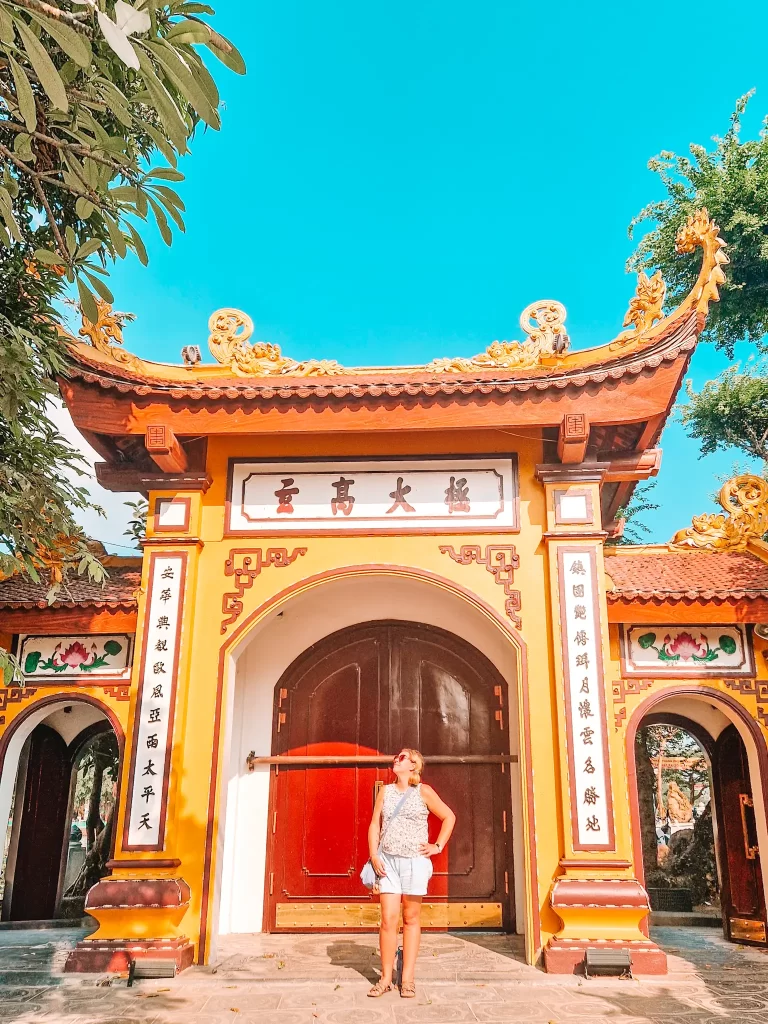
Brief history of Hanoi
Archaeological evidence indicates human habitation in the area as early as the Paleolithic and Mesolithic ages. In the 3rd century BCE, An Dương Vương established Cổ Loa Citadel near present-day Hanoi, serving as the capital of the Âu Lạc Kingdom.
The city’s prominence rose in 1010 CE when Emperor Lý Thái Tổ of the Lý dynasty designated it as the capital, naming it Thăng Long (“Rising Dragon”). It remained the political center until 1802, when the Nguyễn dynasty shifted the capital to Huế.
Under French colonial rule in the 19th century, Hanoi became the capital of French Indochina in 1902, and this heritage is visible across the city. After the August Revolution in 1945, Hồ Chí Minh proclaimed the Democratic Republic of Vietnam in Hanoi. The city endured significant events, including bombing, during the First Indochina War and the Vietnam War, ultimately emerging as the capital of a reunified Vietnam in 1976.
A number of Vietnamese novels have been published in English in recent years, incluiding some amazing books set in Hanoi. Check out my guide to books set in Southeast Asia if, like me, you learn about history by reading well-researched novels.
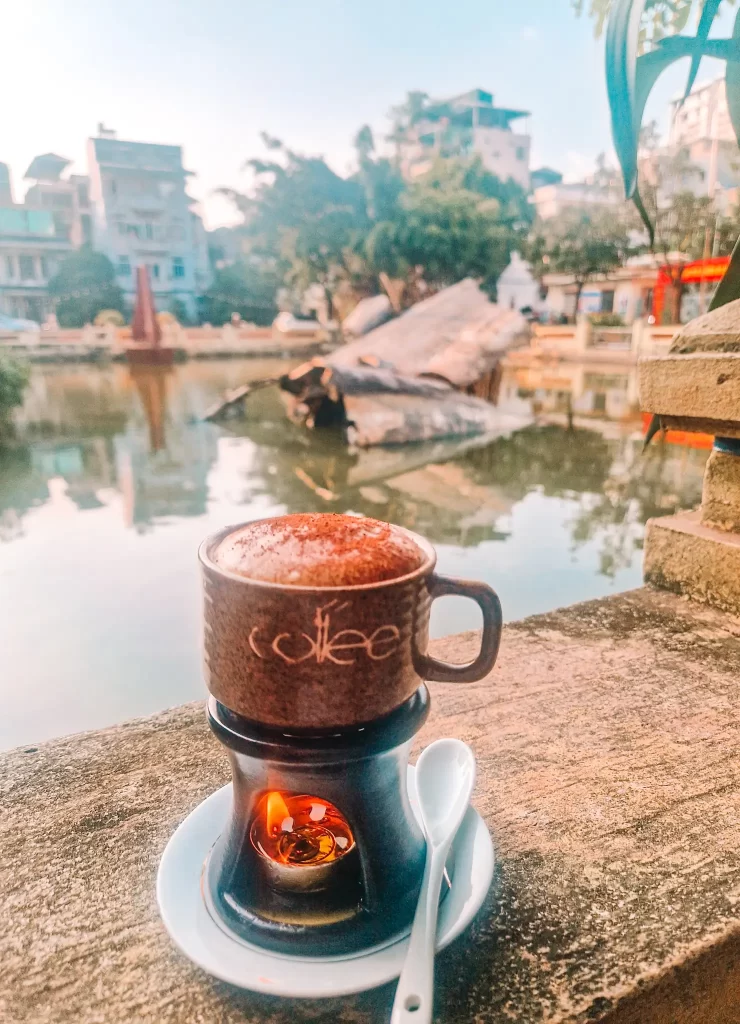
Your 2 day Hanoi itinerary
Day 1
Stop 1: Explore Hanoi’s Old Quarter
Cost: Free
One of the most important things to do in Hanoi is explore the Old Quarter. This area is the traditional core of Hanoi, and streets still retain their old specialties. For example, while I was there in October 2024, I found a whole street dedicated to selling decorations (Christmas on one side, Halloween on the other). The area also used to be known as the 36 Streets, after the 36 guilds that used to exist in the city.
Unlike other cities from the French Indochina period, like Phnom Penh and Vientiane, Hanoi has retained much of its colonial architecture. As well as the more traditional shops, the area is full of restaurants, cafes, bars and souvenir shops. You should also make sure to stop by the beautiful French-style Opera House. This is a stunning yellow building built during colonial times, with construction finishing in 1911.
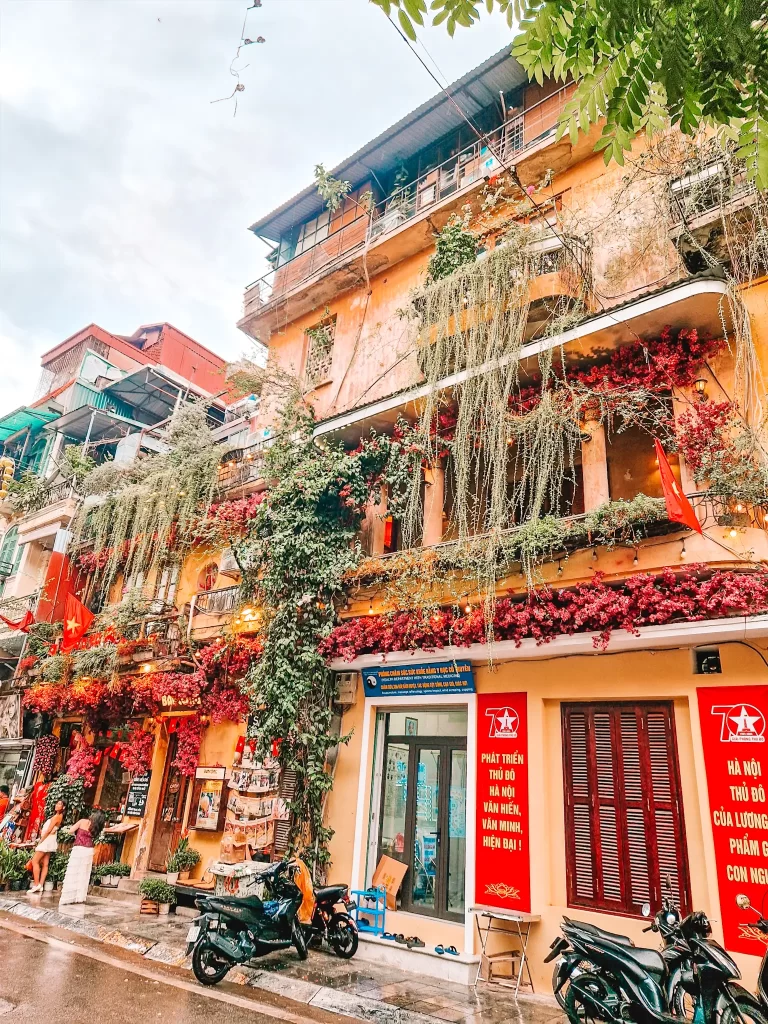
Unlike many major cities, for example central London, Hanoi’s Old Quarter still feels like a place where real people live – not least because of the endless motorbikes zooming around. There are many beautiful buildings, often with gorgeous plants trailing over them. If you peer upwards, you’ll often find cafe terraces overlooking the street, just waiting for you to step in, sip a coffee and people-watch.
Exploring the Old Quarter is a great way to start your Hanoi itinerary as it will help orient you for the rest of your stay. Depending on how long you spend exploring, there are myriad options in the Old Quarter for both breakfast and lunch.
Stop 2: Learn about Vietnamese coffee at a coffee workshop
Cost: $15
Egg coffee is a Hanoi specialty, and should definitely be on your list of things to try in Hanoi! Dating from 1946, egg coffee was invented during the First Indochina War by a bartender desperate to find a way to make a creamy coffee without milk, which was in short supply. Vietnam is also famous for other types of coffee, including Salt Coffee, Coconut Coffee, and traditional Vietnamese Phin Coffee.
You’ll no doubt try all of these while you’re in Vietnam, but they’re not often available in the west. If you want to keep your Vietnamese coffee habits once your trip is over, Vietnamese Coffee Workshops offers a number of different options to learn how to make Vietnamese coffee. I chose the Egg and Coconut option.
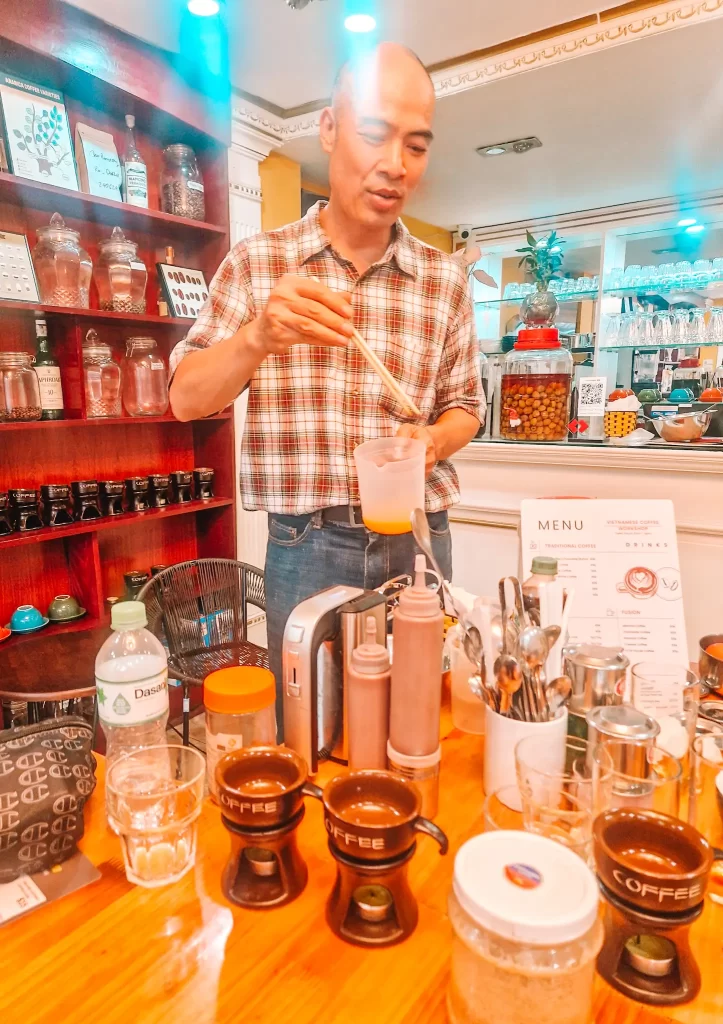
Over about 2 hours, Dang talked us through the history and different types of coffee. He showed us how to make traditional Vietnamese coffee before moving on to the special options. Every step was clear and we even got to try our hand at latte-art!
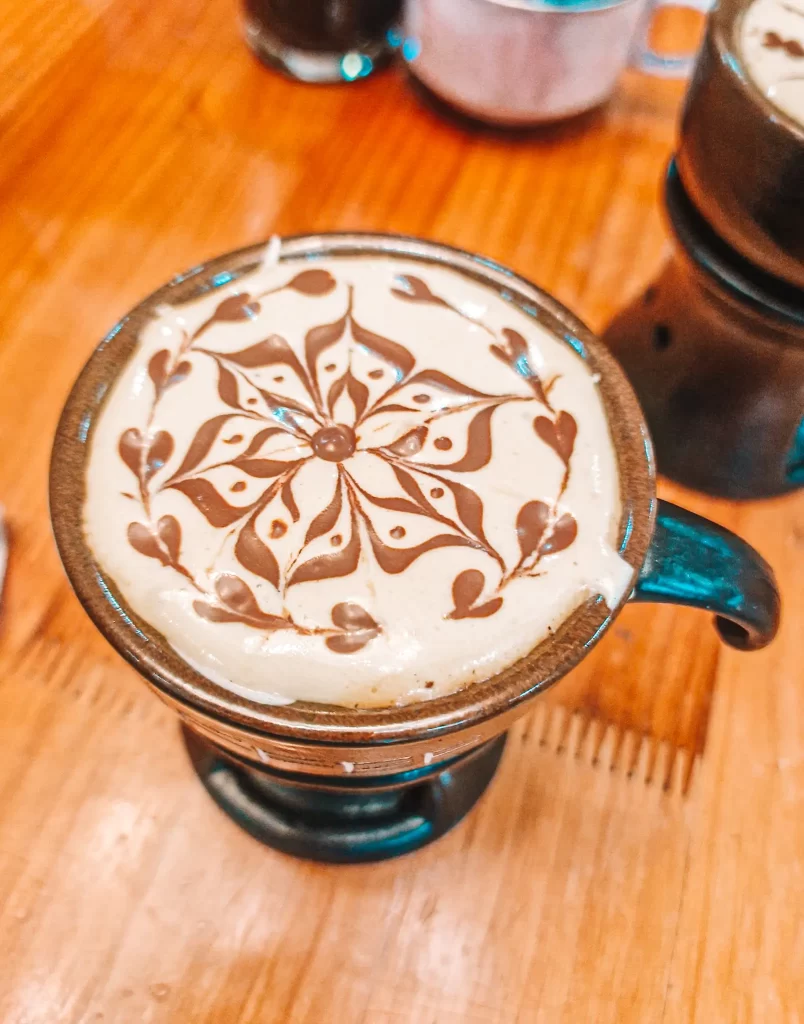
Egg coffee was hands down one of my favourite things about Vietnam, so learning how to recreate it when I get back home was an absolute must!
Stop 3: Visit Hoàn Kiếm Lake, the beautiful core of Hanoi
Cost: 30k VND
At the edge of the Old Quarter is the beautiful Hoàn Kiếm Lake, which forms the center of Hanoi. Meaning Sword Lake, the lake is believed to contain a sword provided to an ancient King of Vietnam to repel northern invaders. Once he’d defeated the enemy, a turtle surfaced from the lake and demanded the sword back. It has lived in the lake ever since.
Walking along the edges of the lake is incredibly popular with Hanoians, and it forms the heart of the city. It’s a beautiful respite from the endless dodging of motorcycles on Hanoi’s other streets, but it’s also where people come to exercise and to relax.
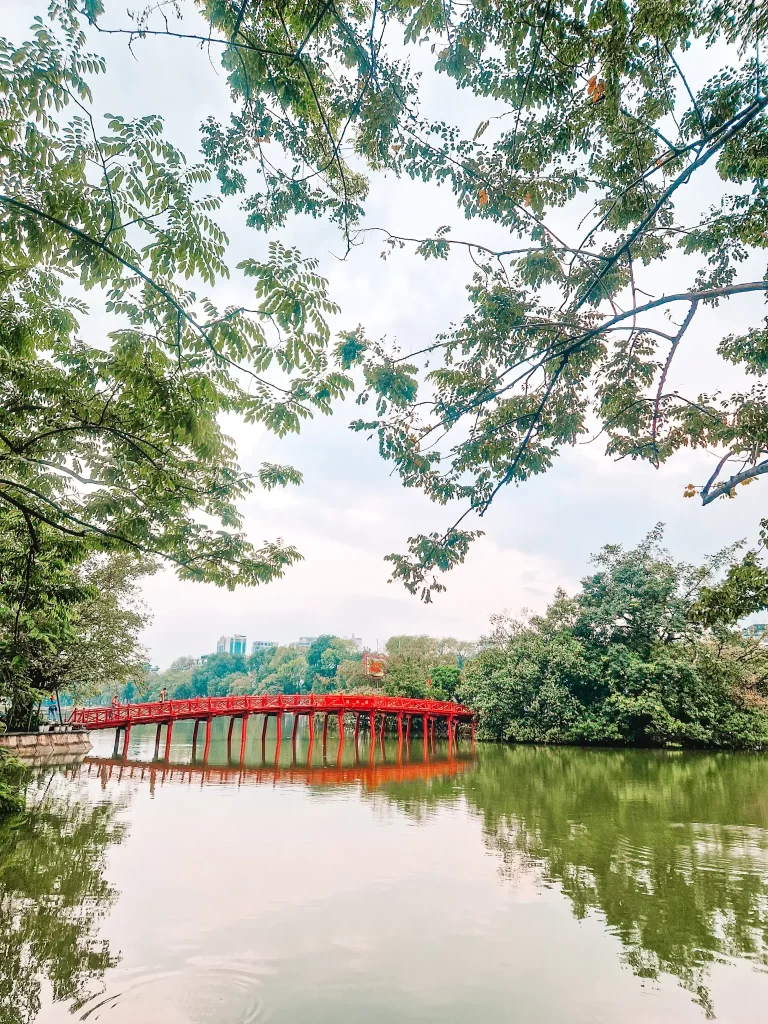
Head out to the temple in the middle of the lake, via the iconic red bridge. Ngoc Son Temple, built in the 19th century, was originally dedicated to a famous Chinese general to repel misfortune, before being rededicated to Buddha. There are two main temple buildings on the small island and walking around them is a lovely way to see traditional northern Vietnamese architecture.
Stop 4: Go cafe hopping
Cost: depends on the cafe
Spend your afternoon cafe-hopping around Hanoi, taking in any bits of the Old Quarter you missed when you explored this morning.
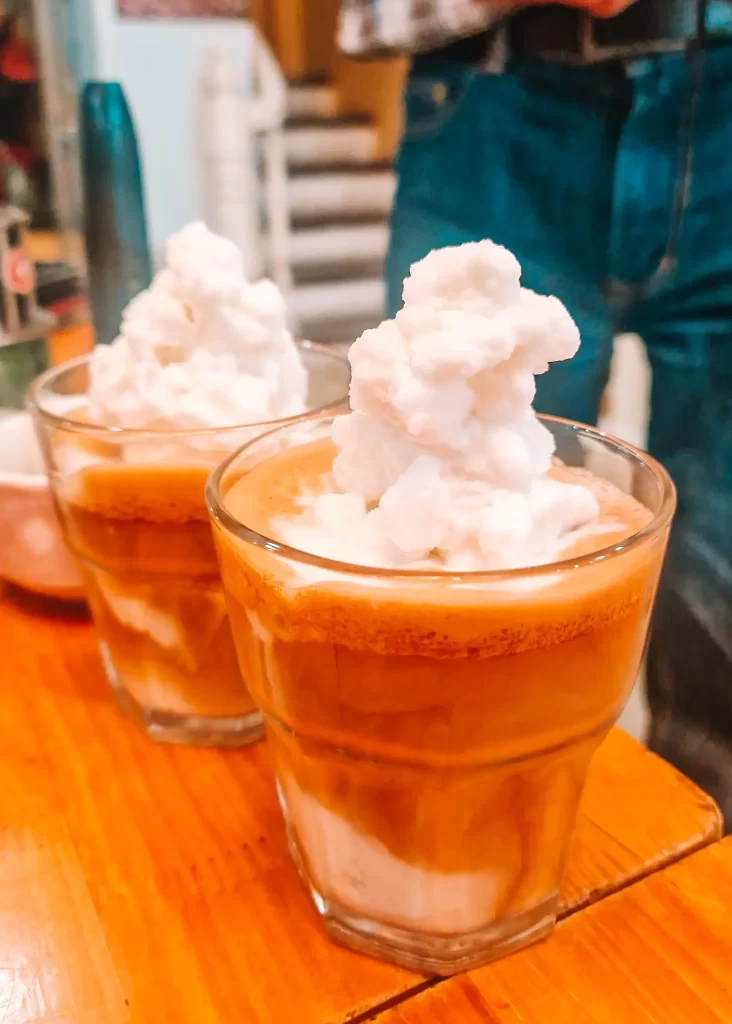
Like Chiang Mai in Thailand, Hanoi is an amazing haven of different cafes, many of which have become famous on Instagram. Vietnamese coffee is also some of the best in the world. Add those together, and cafe hopping is one of the best things to do in Hanoi. You can visit the famous Giang Coffee shop , where the inventor’s son still serves up his father’s invention today.
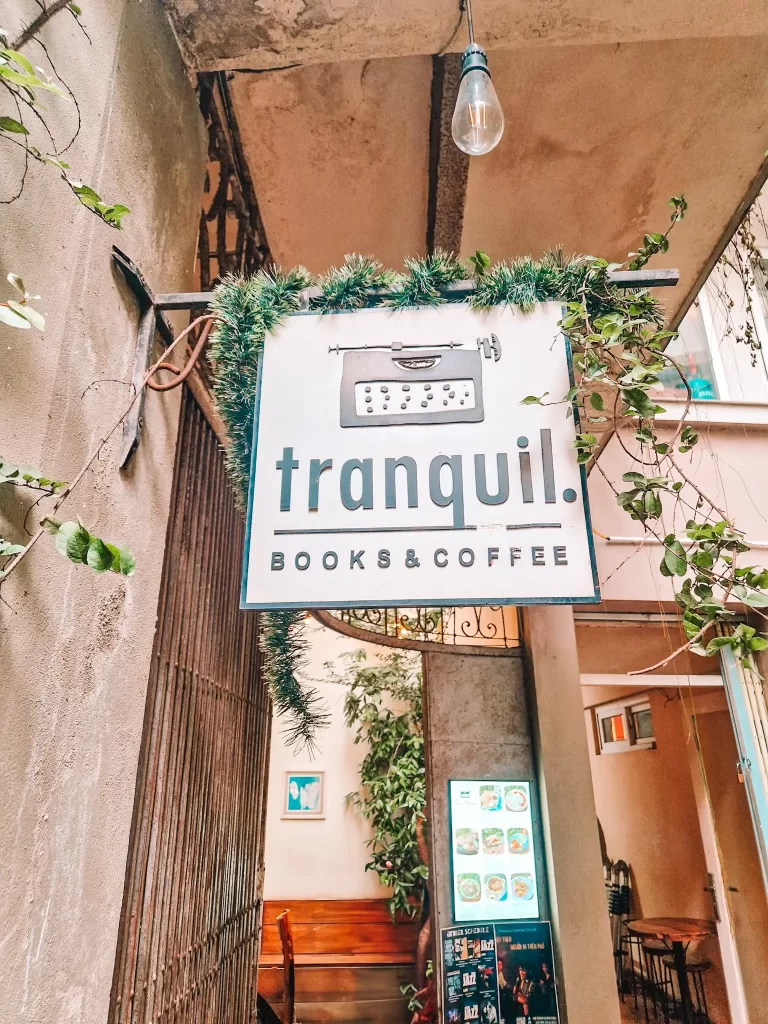
Some of my favourite cafes were:
- Tranquil Books and Coffee – this hidden haven actively encourages quiet. It’s designed to look like a small old fashioned library, with book covered walls. It has an indoor area with aircon and tables outside, and being quiet is actively encouraged. This makes it a great place to work as well as to chill. The coffee is excellent and I was always able to find a table.
- Dream Beans Cafe and Roastery – this small family run cafe was near my hotel and offered excellent coffee, including the first French press coffee I’d had in months.
- Note Coffee Shop – I didn’t visit Note Coffee, but you might recognise it from Instagram. The walls are covered with post-it notes, and you’re able to add your own message
Stop 5: Spend the evening at the exhilarating Train street
Cost: a drink at a cafe
When I visited Hanoi in 2010, Train Street wasn’t even on the radar of tourists. It’s now an instagram-famous, bustling street full of cafes – or rather, both Train Streets are! What Instagram doesn’t tell you is that there are two streets in Hanoi which provide the now famous experience of having a train whizz by as you drink a coffee or beer.
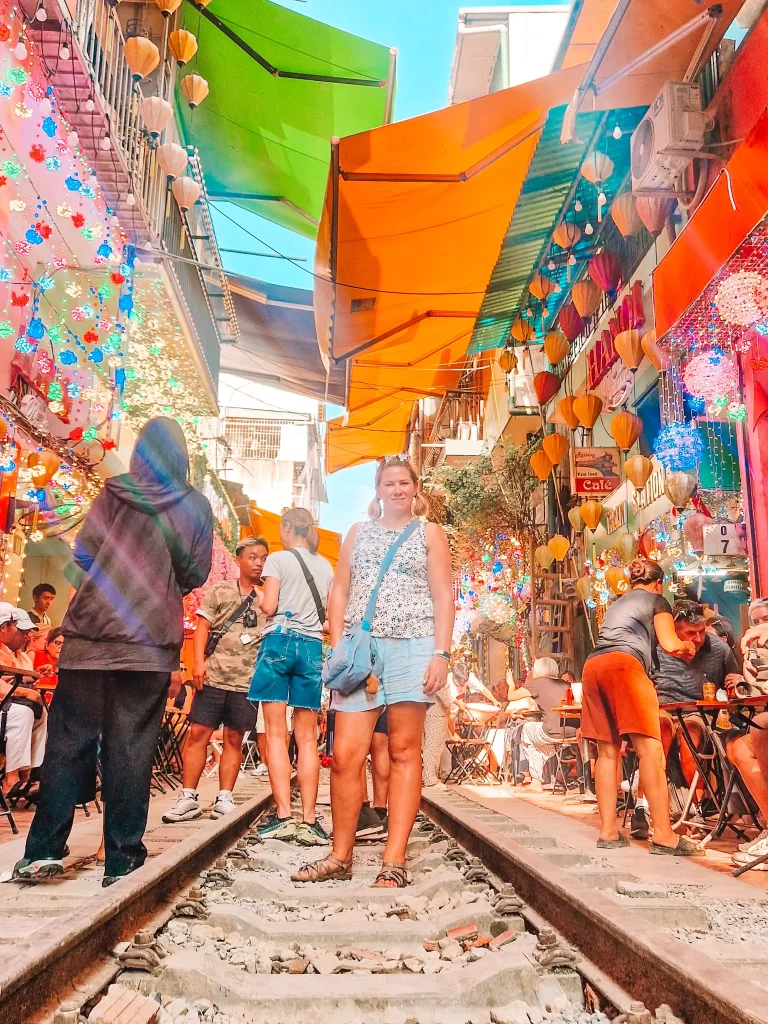
I visited both Train Streets, and there is little to pick between them. Both are lined with cafes and bars, which are cute during the day and light up neon at night. There are usually only a couple of daytime trains. Nighttime trains are more frequent as sleeper trains leave Hanoi station.
Know before you go for Train Street:
- This information is accurate in March 2025. However, Train Street is increasingly controversial in Hanoi for safety reasons and the details might change depending on action from the Vietnamese Government.
- Check the current timetable – and make sure you’ve checked the right one for the Train Street you plan to visit
- Get there early. Unsurprisingly, seating along the street is limited, and cafes fill up quickly. Getting there early will also give you time to take pictures safely on the track.
- Don’t be an idiot. While I was there, a couple of tourists jumped out on the track as the train was approaching, trying to get that perfect selfie. Apart from the fact that you’ll get screamed at by the cafe owners (quite rightly), it’s also really dangerous. People have been injured on Train Street. It‘s likely to be shut down soon if accidents continue to happen. Apart from tourists losing this unique opportunity, it will also lose the cafe providers their livelihood.
With that said, visiting one of the Train Streets is really one of the most unique things I’ve done while travelling. Make sure you plan your day around this time bound opportunity.
Day 2
Stop 1: Get off the beaten track in Hanoi with a motorcycle tour
Cost: $50, including lunch, coffees/drinks and entrance fees
As you’ll likely know, Vietnam is famous for the amount of motorbikes ridden compared to cars. In other parts of Vietnam, this feels manageable, but in Hanoi, the sheer number of motorbikes at every crossing is overwhelming. While many visitors will ride a bike in quieter parts of Vietnam, most tourists agree that biking in Hanoi is only for experts!
However, sticking to walking or taking Grab bikes/taxis means that there are parts of Hanoi you might not get to see. To get around this, I took an easyrider motorbike tour with Motorbike City Tours, which offers women-led motorbike tours of the city. While I booked a small group tour, I was the only person booked in that day, so I was lucky to have a private guided tour of Hanoi!
Is it safe to take a motorcycle tour?
✅ Experienced, safe local drivers. (Mai, my guide, was excellent) ✅ Larger, comfortable motorbikes – no clinging on like on Grab ✅ Stops at off-the-beaten-path sites
The route
Mai took me to a part of the city only accessible by bike – the lush green Banana Island in the middle of the Red River. This small island is only used for agriculture, and it was really interesting to see such an unusual part of a big city.
Mai was able to get me a last-minute spot at a cafe on Train Street for one of the daytime trains. In addition, we visited Tran Quoc Pagoda on West Lake, which I hadn’t visited before. This is the oldest temple in Hanoi, dating from the 6th century, and it features a gorgeous 11 storey stupa, lotus flower statues representing purity of the mind and body, and a Bodhi Tree, a cutting from the 2,500 year old Great Bodhi Gaya Tree, gifted to Vietnam by India in 1959.
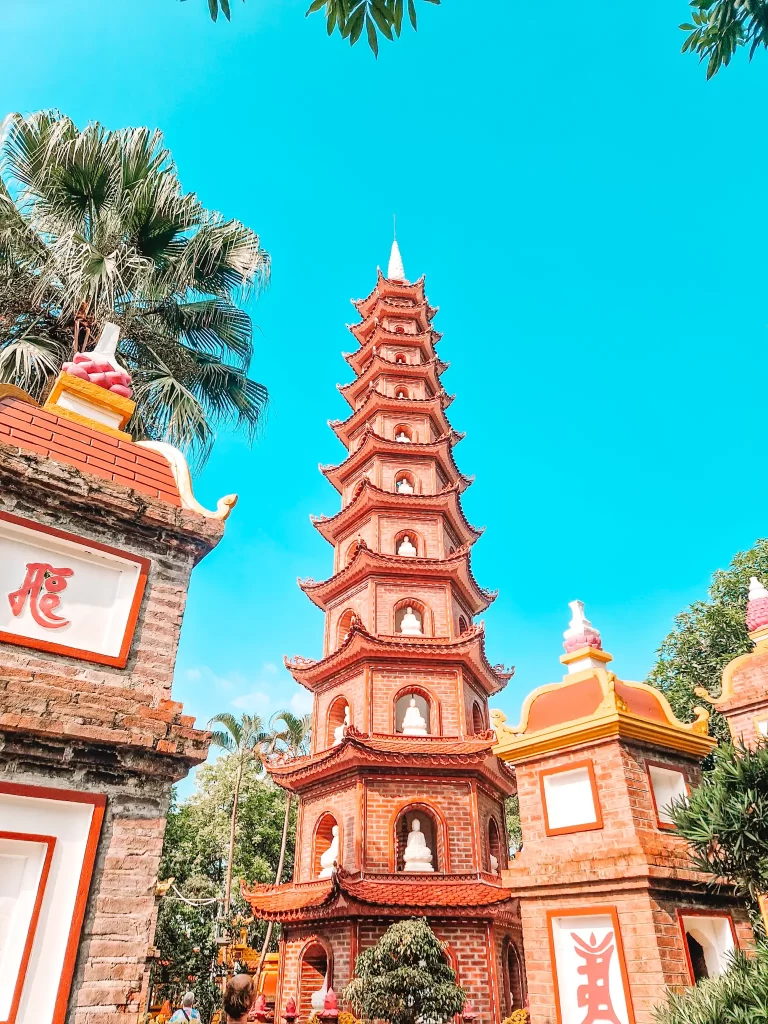
We spent time driving through both the tiny alleys and grand promenades of Hanoi. This included passing by some of Hanoi’s most important buildings, such as Ho Chi Minh’s Mausoleum. Throughout our ride, Mai filled me in on the historical significance of the areas we were passing through.

As our final stop, Mai took me to a small lake where the remains of an American B52 bomber plane still jut from the water. We sat at a cafe and I tried Hanoi’s famous egg coffee while we had lots of interesting discussions about the impact of the war. Mai’s knowledge of history was impeccable and she explained how the plane ended up in the lake as part of the Christmas Bombing Raids on Hanoi in 1972.
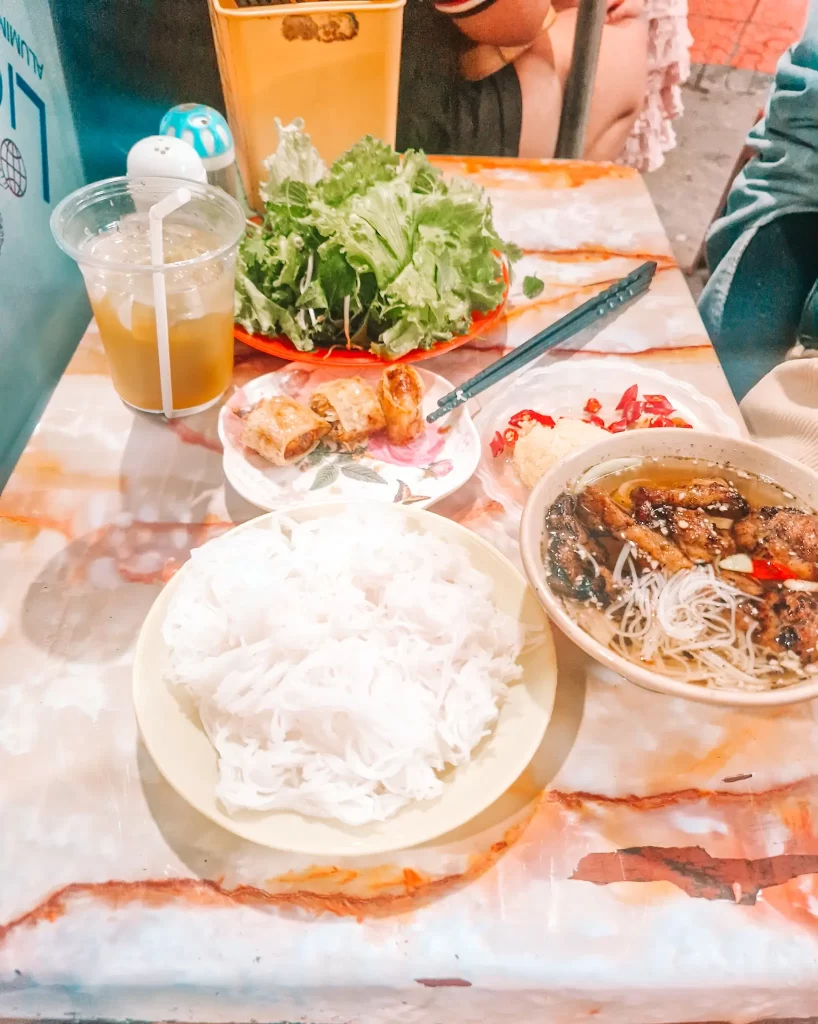
As I did my trip in the afternoon, we started off with a delicious streetfood lunch. But if you follow this itinerary, you’ll end your tour with lunch at Bun Cha Hang Quat, which has nearly one thousand reviews on Google and a score of 4.4.
I highly recommend this tour if you want to see parts of Hanoi you’d otherwise miss, while getting a really strong understanding of Hanoi’s history. The company also runs nighttime food tours and countryside tours – if I’d had more time I would have loved to do another tour with them.
Stop 2: Understand modern Vietnamese history at Hoa Lo Prison museum
Cost: 50k VND
After lunch, continue your exploration of Hanoi’s recent history.
One of the best museums in Hanoi is the Hoa Lo Prison Museum. Located in central Hanoi, a quick Grab away from the Old Quarter (or a short walk), this museum details the 20th century history of Vietnam.
Built by the French in 1896, the prison complex became known as the infamous Hanoi Hilton. The majority of the exhibitions focus on the period of French colonisation, including the grim opportunity to see an original French guillotine. There are also exhibits on the prison’s use during the Vietnam war. There is a slightly unnerving focus on how happy American prisoners were to be in the prison and the gifts they were given upon release.
While much of the signage is extremely jingoistic and patriotic, you can sift through the superlatives to see that the history of this site is extremely dark. There is also a moving memorial on site. If you are interested in history, a visit to Hoa Lo is unmissable.
Stop 3: Visit the Harry Potter Cafe
Cost: free to enter
While I’ve already listed some of my favourite cafes, Always deserves it’s own spot. This Harry Potter-themed cafe is helpfully located in the Old Quarter, so it’s easy to pop in and relive your childhood.

They offer a decent menu of Potter-themed drinks (I opted for Polyjuice Potion) and there are great spots for photos. They also have a rack of robes for you to dress up in to get that perfect shot (unlike some others I’ve visited, like Platform 9 1/2 in Ipoh where you have to rent the robes). In short, this is a must-do in Hanoi for any Harry Potter fan!
Stop 4: Watch the famous Water Puppet Show
One of Hanoi’s most popular cultural attractions is its famous Water Puppet Show. Water Puppetry has a long history in Vietnam, dating back to the 11th century, when it was originally performed in rice paddies and ponds. It then became part of the entertainment offered to the Imperial court. It is a big part of Vietnam’s cultural heritage.
As it has been running for over 50 years, I saw the show when I visited Hanoi back in 2010. This shows how enduring it is as a cultural experience in a time when tourism in Vietnam has changed so much. The show features a story from Vietnamese folklore, performed with live music and visual effects.
If you want to see the show, you should book tickets in advance. You can find them on sites like Get Your Guide and Viator, or on the official website. The theatre is located by the Old Quarter so it’s easy to fit into your day or evening.
Frequently asked questions
Is Hanoi safe
Hanoi is as safe as most other big cities. The Times reports much lower rates of crime than Ho Chi Minh City. The British Foreign, Commonwealth and Development Office (FCDO) states that violent crime against tourists is rare. They state that pickpocketing and bag snatching are most likely to be crimes experienced by tourists, as in many cities. Take precautions like holding your bag in front of you and investing in a phone tether.
As ever, you should take basic precautions while travelling. Try to avoid using unlicensed taxis – Grab is everywhere in Hanoi and offers better safety features. If you are a solo female traveller, be aware of where you’re walking at night. My experience was that there were plenty of people around in Hanoi in the evenings.
When is the best time to visit Hanoi
Hanoi is best enjoyed from October to April when the weather is cooler and drier. Summer months (May–September) bring intense heat and rain, but they also mean fewer crowds. I visited in October, and while it was still hot on some days, it was bearable.
How to get to Hanoi: Air
Noi Bai International Airport in Hanoi is the second biggest in Vietnam (after Ho Chi Minh City), but I found it a much better experience! It has two terminals – domestic and international.
Destinations include major cities like Bangkok, Kuala Lumpur and Singapore, as well as tourist favuorites like Luang Prabang and Siem Reap.
While I only used the domestic departures terminal, it had far better shopping and food options than I found in the international terminal in Ho Chi Minh.
The airport is located about 22 miles away from the centre of the city, and your transport options are:
Grab – about 40 minutes. Grab is relatively cheap to and from the airport – around 300k VND/£9.30/11e/$11.70. There will be a Grab area at the airport to facilitate pick up and drop off.
Bus – about 1 hour. Costs 5000 VND (about 30p). Buses run every 20 to 30 minutes.
Shared minivan service to the Vietnam Airlines office in Hanoi.
How to get to Hanoi: Train
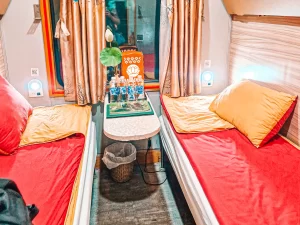
Hanoi is also one of Vietnam’s rail hubs for the North-South Railway, or Reunification Express. Trains run south to Hue and Da Nang (nearest city to Hoi An) and north to Lao Cai (nearest city to Sapa and Mount Fansipan). I created a comprehensive guide to Vietnam’s overnight trains to help with what can be a complicated experience.
Hanoi Station is in the centre of the city. From Hanoi Station, it’s usually a quick Grab ride to your hotel (and vice versa). There are a couple of small shops at the station for basic snacks and water, but no cafes or other places to wait – just a basic waiting area.
How to get to Hanoi: Bus
Hanoi is also the centre of bus routes across the north and centre of Vietnam. Routes include Halong Bay, Sapa, Ninh Binh, Da Nang and Hoi An. Most buses will depart from their own terminals, or offer pick up, rather than leaving from a central bus station.
Buses in Vietnam vary greatly in terms of type and quality. They include the famous VIP Sleeper buses, more ordinary sleeper buses, Limousine vans, and minivans. When you are booking your trip, make sure to do your research to get the comfort you want.
I used 12GoAsia to book buses in Vietnam
Where to stay in Hanoi
The best area to stay in Hanoi is in or around the Old Quarter, as many of the best things to do in Hanoi are in that area. My preference was to stay just outside, to avoid the noisier streets, but within easy walking distance. However, there are lots of good hotels within the main Old Quarter area as well – maybe just avoid Beer Street!
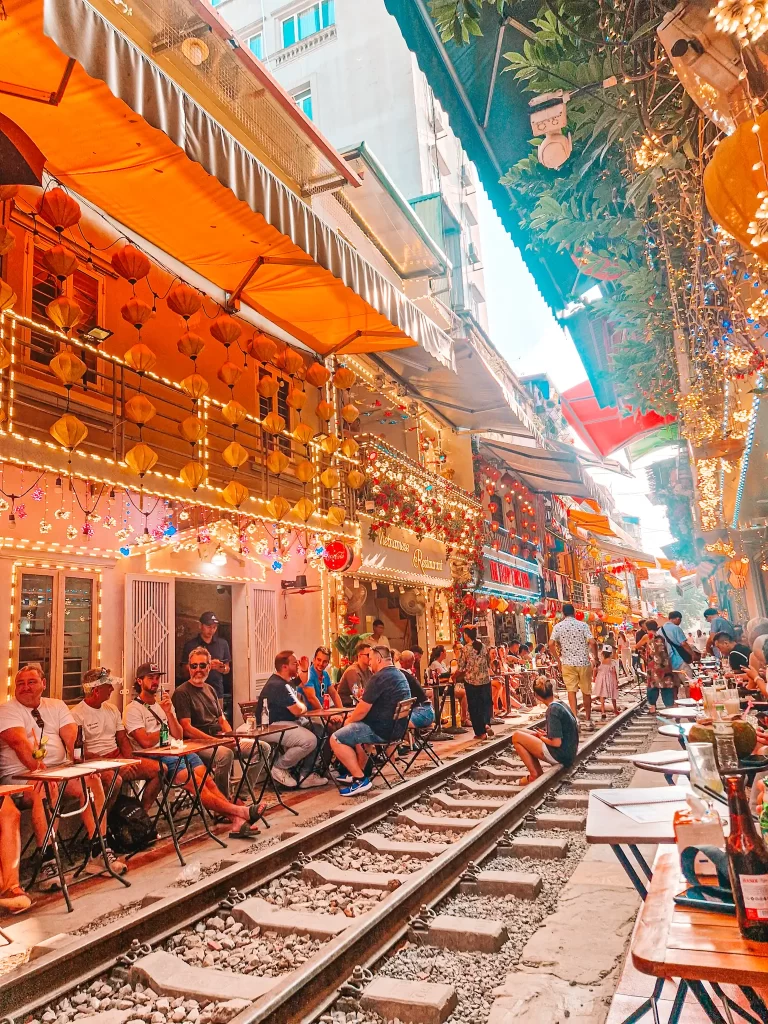
Hanoi is a city that stays with you long after you’ve left. Its rich history, vibrant culture, and dynamic street life make it one of Southeast Asia’s most captivating destinations. Whether you’ve followed this two day Hanoi itinerary or simply soaked in the city’s energy at your own pace, Hanoi has a way of making you want to return. From the hum of motorbikes to the aroma of fresh phở on every corner, it’s a place that offers both adventure and reflection. If you haven’t been to Hanoi yet, it’s time to add it to your list—you won’t regret it.

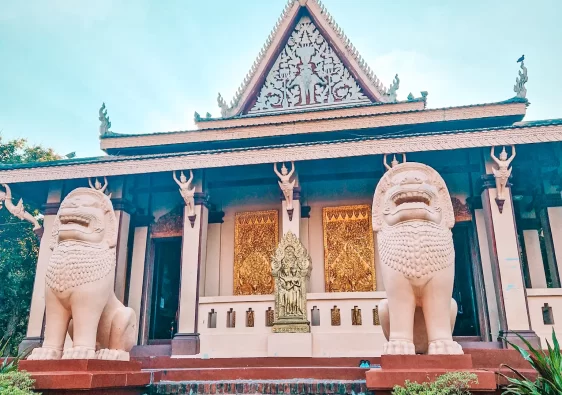
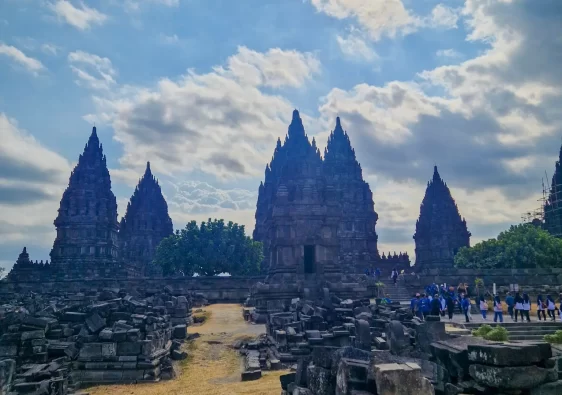

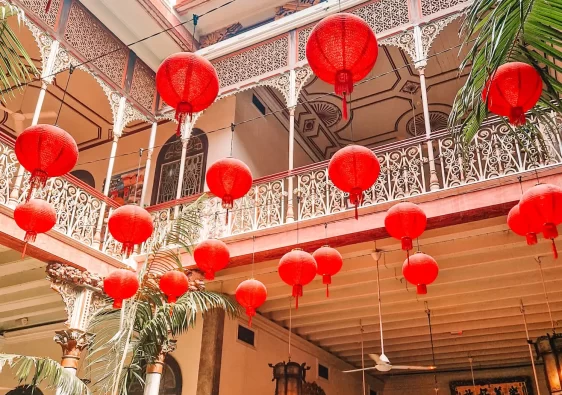
[…] Amazing Things to do in Hanoi – how to make the most of this vibrant city.. […]
[…] Want to find other cities with great cafe culture in South East Asia? Try this guide featuring some of the best coffee shops in Siem Reap or find out how to do a coffee making workshop in Hanoi. […]
[…] train line stretches from Ho Chi Minh City in the south up to the capital Hanoi in the north. It continues on to Lao Cai, the nearest major city to Sapa, where you can find Mount […]
I’ve always loved experiencing the many countries of South East Asia, and certainly Vietnam, for the history, architecture and food.
Your post made me want to visit again some day!
Oh I love everything in this itinerary! Your latte art was so good.
I love Hoi An! I went about a year ago, it is fabulous. Though I can’t believe I missed the harry potter cafe!! Rookie mistake!
I have tried Vietnamese coffee but never coconut coffee. That sounds amazing and your trip looked so fun.